Are your fish slow-moving now? Or perhaps the leaves of your aquarium plants are turning out to be of brown? These could be some of the trends of water pollution. The correct concentration of various chemical compounds dissolved in water is, therefore, an important factor in enhancing life underwater.
Content Table
This article will highlight the basic water parameters that are essential in different types of aquariums, and testing water in fish tanks using the test kits. We will also include some basics of DIY water testing in case you find yourself without a test kit. It is now high time for some wet and bubbly sessions for your underwater business!
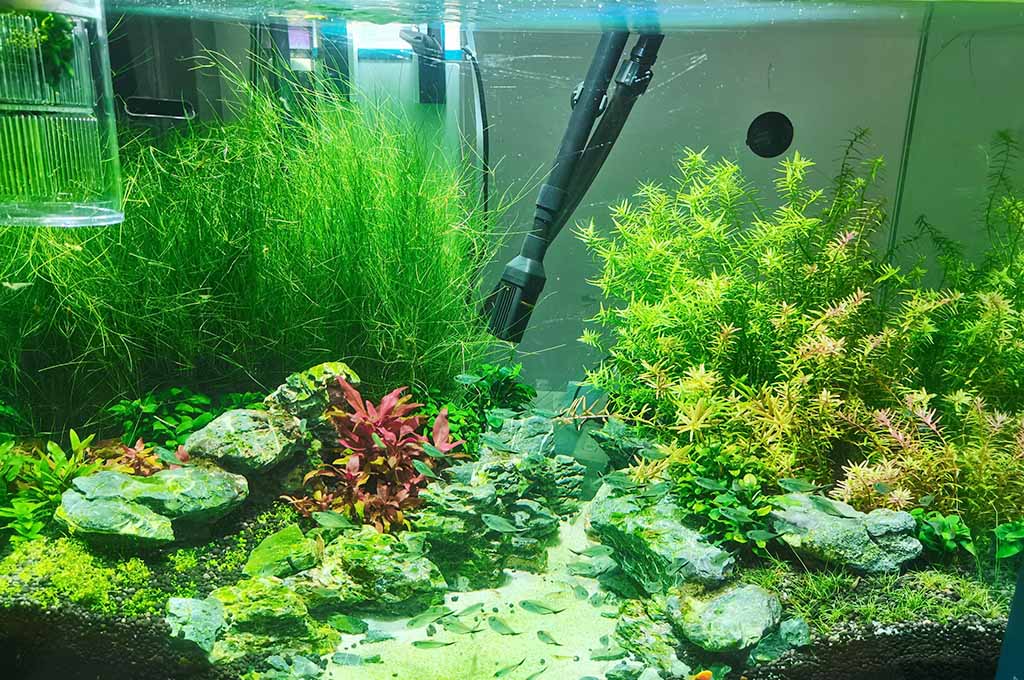
Test the fish tank water
Fish Tank Water
Fish tank water is an artificial, carefully maintained environment that aims to replicate the natural environment of the fish living in it. It is not simply water; it is water that contains diverse chemistry and biology that play critical roles in sustaining the lives of the organisms found in it.
The level of requirements for the water in the fish tank may also depend on the type of fish you have. However, some general parameters apply to most of the freshwater and saltwater fish tanks.
Water Source
- Tap water: Commonly used as source water but typically needs pre-treatment to eliminate chlorine, chloramine, and heavy metals.
- Dechlorinated water: Filtered and chlorinated water that is treated with a substance known as a dechlorinator.
- Distilled or purified water: Applied for certain fish species or for achieving some particular water parameters.
- Reverse osmosis (RO) water: Distilled water is commonly used in saltwater aquariums.
What Needs to be Tested in Aquariums
It is important to note that from time to time you do a water test of your aquarium for the fish. Now, let’s review the main parameters and their importance.
Primary Parameters
These parameters are essential for all aquarium types
- Ammonia (NH3): One of the metabolic waste products of fish. High levels of ammonia are fatal for aquatic pets.
- Nitrite (NO2): Another variant of nitrogen compound – an intermediate product in the nitrogen cycle and toxic too.
- Nitrate (NO3): Not as toxic as hydrogen sulfide, but in large amounts, it is poisonous to humans and animals.
- pH: Used to determine how acidic or alkaline a given substance is. Influences the quality of water and the condition of fish.
- Temperature: Essential for normal fish metabolism and general health.
Secondary Parameters
These parameters are important for specific aquarium setups or fish species:
- Hardness (GH): Determines the level of calcium and magnesium in the water.
- Alkalinity (KH): Helps to regulate changes in pH, which should be important to control water conditions.
- Oxygen (O2): Very crucial in the process of respiration among the fish found in the mountainous region.
- Carbon Dioxide (CO2): Closely related to plant growth, specifically in the planted tanks.
- Phosphates: May lead to the formation of algae if they become too inclined.
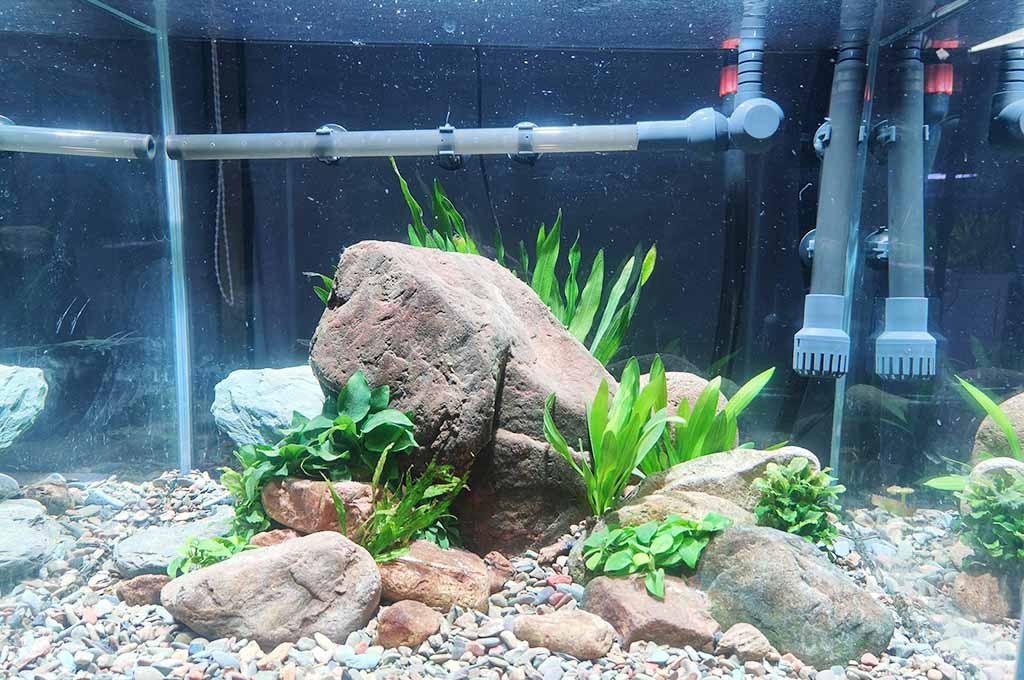
How to test the water
Parameters for Specific Aquarium Types
Freshwater: As for the primary parameters, they often suffice for the task. Further examination of hardness and alkalinity may be required based on the type of fish to be reared.
Saltwater: Besides these primary parameters, testing for calcium, magnesium, and salinity should also be conducted.
Planted Tanks: Phosphates and CO2 must be closely controlled to maintain healthy plant growth.
Understanding the Role of Each Parameter
- Ammonia and Nitrite: These are pathogenic and toxic byproducts of fish waste. High levels of ammonia and nitrite imply an unhealthy aquarium and could even contribute to the death of the fish. Low levels may be achieved through water changes and maintaining a functional filter in a fish tank
- Nitrate: Though it is less toxic when compared to ammonia and nitrite, high concentrations of nitrates may also prove to be stressful for the fish. However, frequent water changes and the presence of live plants in the tank contribute to the lowering of nitrate levels.
- pH: It alters the metabolic rate of fish and the chemistry of the water. The pH level preferred by each fish species varies depending on the species.
- Temperature: It is essential for fish well-being. It is crucial to maintain the correct range of temperature.
- Hardness and Alkalinity: These are the major parameters that affect the stability of pH. They are essential in a balanced aquarium and should be incorporated appropriately.
- Oxygen: Fish need dissolved oxygen to breathe, unlike other animals, which have lungs. Adequate aeration is essential.
- Carbon Dioxide: Required for plant growth in the planted tanks.
- Phosphates: Phosphates within the limit are not poisonous for the water bodies; however, high levels of phosphates contribute to the growth of algae.
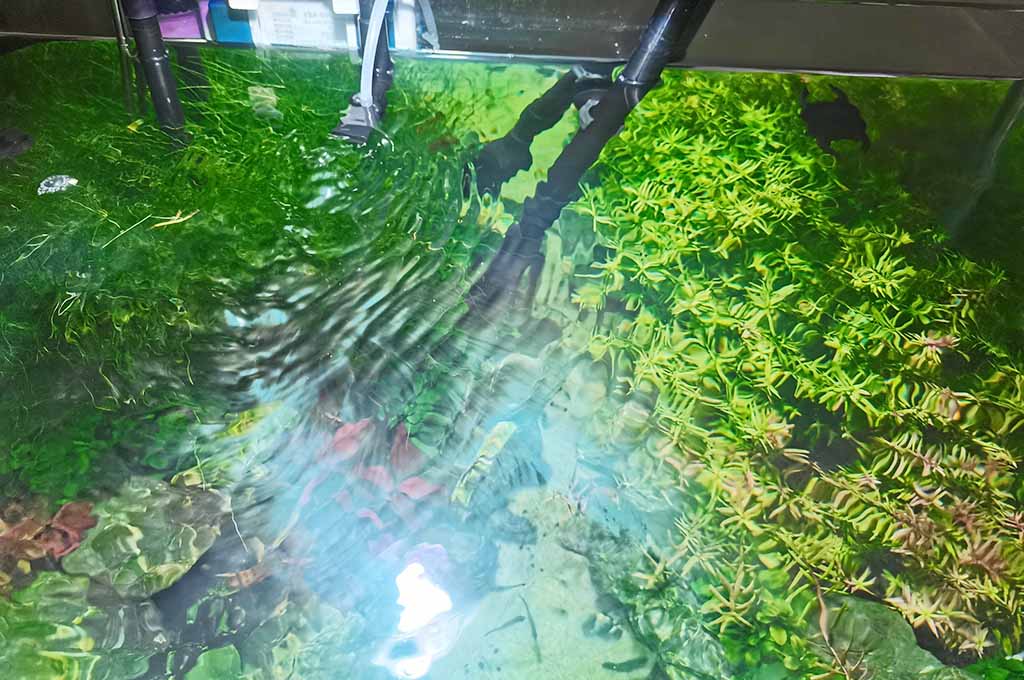
testing the water in a fish tank
How to Test Fish Tank Water
Testing Methods
There are two primary methods for testing fish tank water parameters.
| Test Strips: These are easy to use, but not as precise as liquid-based ones. It is recommended for use in quick assessments, as they may not give accurate results. | Liquid Test Kits: These are considered more accurate and are typically used for routine screening. |
Testing Frequency
| New tanks | Established tanks |
| Monitor ammonia, nitrite, and nitrate levels daily throughout the cycling process. | Nitrogen cycle parameters should be tested weekly for ammonia, nitrite, and nitrate. Check the pH, temperature, and other factors depending on the needs of the tank when necessary. |
Testing Based on Tank Type
- Freshwater Community Tanks: Concentrate on ammonia, nitrites, nitrates, pH, and temperature.
- Saltwater Tanks: Apart from the above, test salinity, calcium, and magnesium.
- Planted Tanks: Check ammonia, nitrite, nitrate, pH, temperature, CO2, and phosphates.
- Breeding Tanks: Test more often for ammonia, nitrite, and nitrate, given the higher stocking levels of fish.
Tips for Accurate Testing
- Calibrate your test kit: They should follow the instructions provided by the manufacturer when it comes to calibration.
- Collect water samples from the middle of the tank. Do not test the water near the filter outlet.
- Test water at the same time each week: This assists you in monitoring changes in water parameters.
- Record your results: It is advisable to keep a record of the test results to note any changes.
Additional Considerations
- Fish Behavior: For instance, a change in the activity level or feeding habits of the fish may be associated with water quality problems.
- Algae Growth: This shows that the presence of great amounts of algae may indicate problems with the nutrient concentrations, especially phosphates.
- Water Changes: Water changes should be done frequently to ensure that the quality of water inside the aquarium is good.
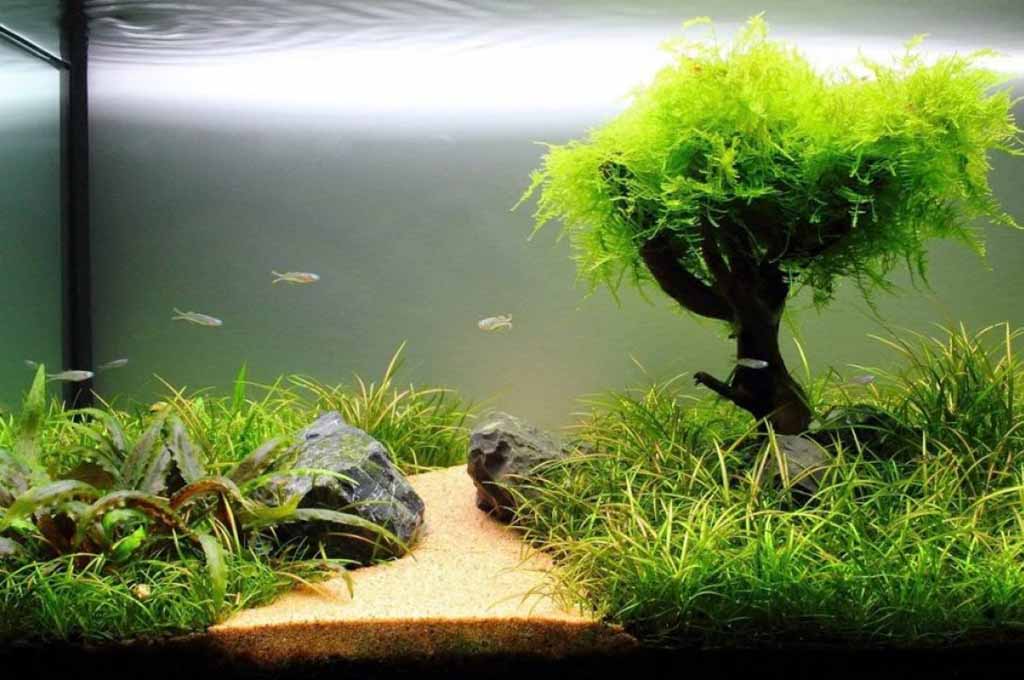
Water in a fish tank
Test Fish Tank Water Without Kit
These methods can provide some clues about your water quality, but they are not as accurate as using a test kit.
Visual Observations
- Water Clarity: Turbidity, which is the cloudiness or haziness of water, suggests that there is production of many waste products.
- Algae Growth: High amounts of algae can also indicate problems with nutrient levels within the water.
- Fish Behavior: These are some signs that may indicate that water quality is affected: aquatic life might get sleepy or gas at the water’s surface.
- Plant Health: In the prepared group, a healthy plant means that the water conditions are also good.
Smell Test (Caution!)
- Ammonia Odor: Any situation in which the smell of ammonia is severe.
- Rotten Egg Smell: This suggests increased H2S levels, a poisonous water substance.
Other Indicators
- Temperature: With the thermometer, check the temperature of the water.
- pH: Even though it may not be accurate, pH paper can provide a general idea of the pH level.
- Local Aquarium Store: Most pet stores provide their customers with free water test services.
In Closing
Water management plays an important role in the sustainability of an aquarium. Testing with a standard kit should be done periodically to check factors such as ammonia, nitrite, nitrate, pH level, and temperature. The do-it-yourself strategies, while useful, can give pointers, but they are not very accurate. Knowing these and implementing preventive measures, you can ensure a healthy environment for your water dwellers.
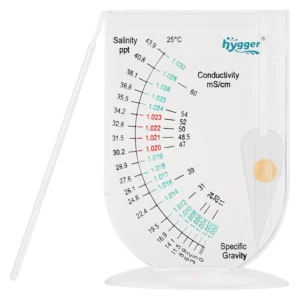
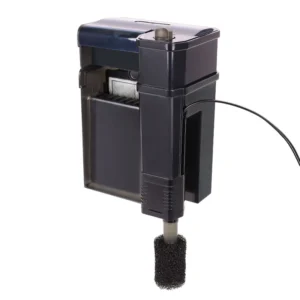
Leave a comment